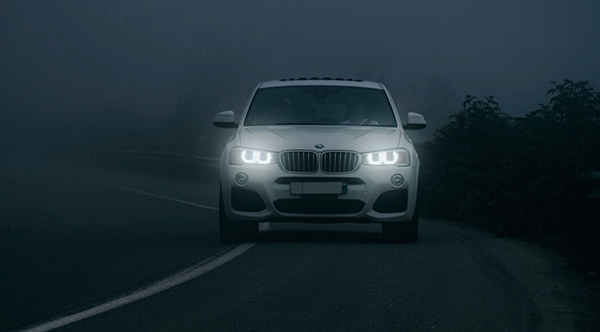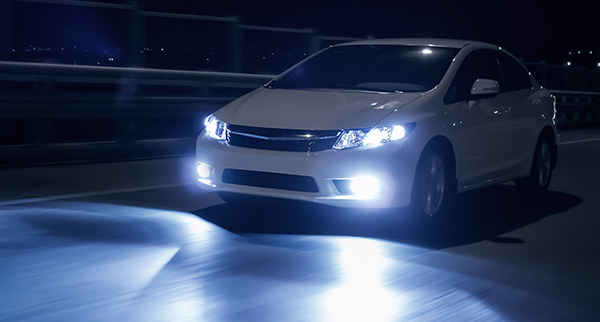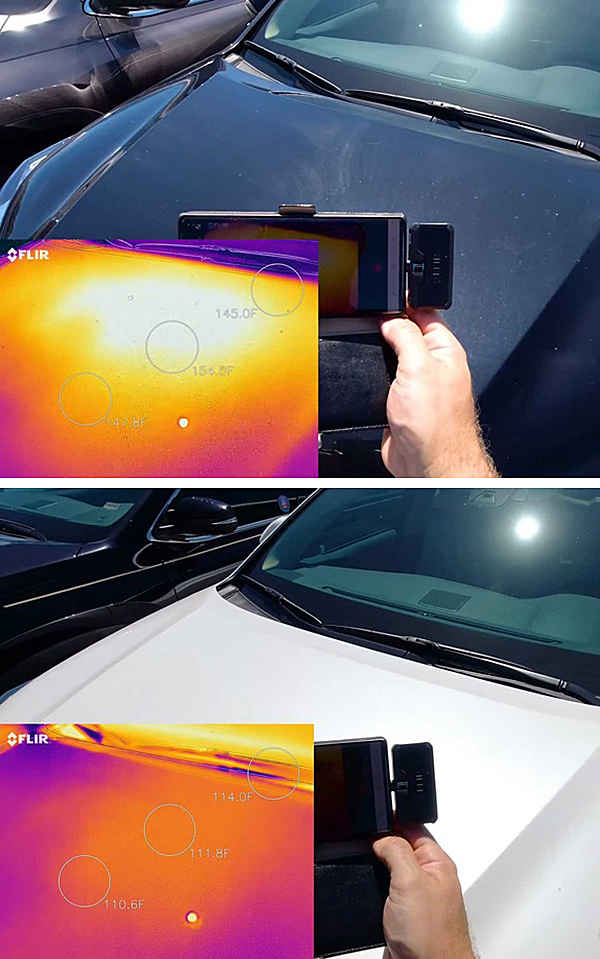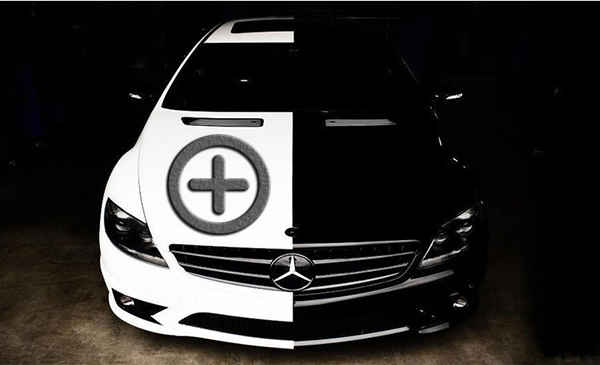Why is white the safest car color?
Among all car colors, white is consistently identified as the safest choice.
Exceptional Visibility in Diverse Conditions

White cars offer superior visibility across various driving conditions. Whether it’s daylight, night, rain, fog, or even snow, the high contrast between a white vehicle and its surroundings makes it easier for other drivers to spot. This enhanced visibility reduces the risk of collisions, particularly in low-light or poor weather conditions.
- Example:
During heavy fog, a white car remains more visible than darker vehicles, which tend to blend into the mist. This visibility can be crucial in preventing accidents in conditions where reaction time is limited.
Additional Information: Visibility is also crucial in urban settings where distractions are abundant. White cars stand out amidst the visual noise, making them easier for pedestrians and cyclists to notice as well.
Superior Light Reflection

White reflects more light than any other car color, making white vehicles easier to see at night or under artificial lighting – example: streetlights. This reflection reduces the likelihood of being overlooked by other drivers, enhancing overall road safety.
- Example:
On a poorly lit highway, a white car is more likely to be noticed by other drivers, especially during late hours, when visibility is naturally lower. This can be a critical factor in avoiding nighttime collisions.
Additional Information: The reflective properties of white cars also help in preventing accidents in parking lots and other areas where vehicles are in close proximity, as they are more likely to be seen by reversing or maneuvering drivers.
Reduced Heat Absorption Leads to Safer Driving

White cars absorb significantly less heat compared to darker vehicles. This results in cooler interior temperatures, which can indirectly enhance driver safety by reducing fatigue and maintaining alertness, especially during long drives in hot climates.
- Example:
A white car parked under the sun will remain cooler than a darker-colored car, minimizing the need for air conditioning. Less reliance on air conditioning not only conserves energy but also helps the driver stay focused on the road rather than being distracted by discomfort.
Additional Information: Overheating can cause discomfort and even health issues for drivers, particularly on extended trips. By keeping the cabin temperature lower, white cars contribute to a safer and more comfortable driving environment.
Association with Maintenance and Safety

White cars are often perceived as cleaner and better maintained. This perception can have real safety benefits, as drivers of white cars may be more diligent about regular maintenance, including ensuring that lights, signals, and mirrors are in good working order.
- Example:
A well-maintained white car with clean windows and properly functioning lights ensures that the driver has optimal visibility, reducing the likelihood of accidents caused by poor visibility or malfunctioning equipment.
Additional Information: Regular maintenance not only keeps the car looking clean but also ensures that all safety features, example: brakes and tires, are in top condition. This proactive approach to vehicle care can prevent accidents and extend the lifespan of the vehicle.
Statistical Evidence Supporting White as the Safest Color

Multiple studies have consistently shown that white cars are involved in fewer accidents compared to other car colors. The reasoning behind this is their increased visibility, which helps in preventing collisions.
- Example:
A study conducted by the Monash University Accident Research Centre (MUARC) found that white vehicles are approximately 12% less likely to be involved in accidents compared to black vehicles when operating under identical conditions. This research highlights the significant influence that vehicle color can have on road safety. The study suggests that lighter-colored vehicles, such as white, may be more visible to other drivers, especially in low-light or poor weather conditions, thereby reducing the likelihood of collisions. Conversely, darker-colored vehicles like black can blend into the surroundings, making them harder to spot, which may increase the risk of accidents. This insight emphasizes the importance of considering vehicle color as a factor in both vehicle safety and accident prevention.
Additional Information: These findings have been corroborated by various insurance studies, which also suggest that white cars are associated with lower claims and reduced repair costs, further reinforcing the safety benefits of choosing a white vehicle.
Interesting Facts About White Cars

Global Dominance:
White is the most popular car color worldwide, with nearly 35% of all vehicles sold being white. This popularity is not just about aesthetics but also the perceived safety benefits that come with the color.
Cultural Interpretations:
In many cultures, white symbolizes purity, peace, and simplicity. These positive associations might influence consumers’ decisions to choose white cars, reinforcing the color’s popularity.
Eco-Friendly Choice:
White cars are considered more environmentally friendly because they require less energy for cooling. By reflecting sunlight more effectively, white cars can reduce the need for air conditioning, thereby lowering fuel consumption and the vehicle’s overall carbon footprint.
Resale Value:
White cars often retain their resale value better than cars of other colors. The widespread appeal of white means that these cars tend to be easier to sell, and they often fetch higher prices on the second-hand market.
Latest News and Developments

Insurance Trends:
Some insurance companies are beginning to factor car color into their risk assessment models. Given the lower accident rates associated with white cars, drivers of white vehicles may soon see reduced premiums. This change reflects the growing recognition of car color as a factor in road safety.
Technological Integration:
With advancements in autonomous vehicle technology, the importance of car color might evolve. However, current autonomous systems, including those used in self-driving cars, still perform better when detecting lighter-colored vehicles like white. This could influence future car design and color trends as autonomous technology becomes more widespread.
Market Shifts:
In response to the growing demand for white vehicles, car manufacturers are offering more variants of white, including metallic and pearlescent finishes. These options cater to consumers who want the safety benefits of white while still expressing their personal style.
Color Psychology:
Recent studies in color psychology suggest that drivers of white cars may exhibit more cautious and conservative driving behaviors. This psychological aspect, combined with the physical benefits of white cars, could further explain the lower accident rates associated with this color.
Choosing a car color is an important decision that extends beyond personal taste. White cars provide significant safety advantages, including enhanced visibility, superior light reflection, and cooler interior temperatures.
These factors contribute to fewer accidents and a more comfortable driving experience, solidifying white as the safest car color on the road.












